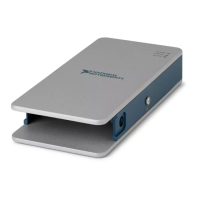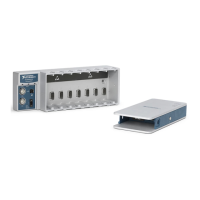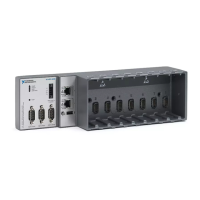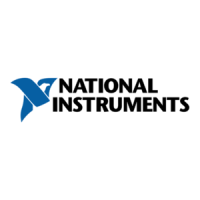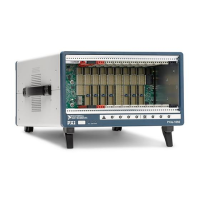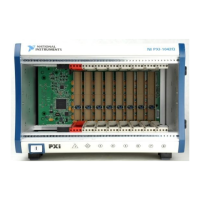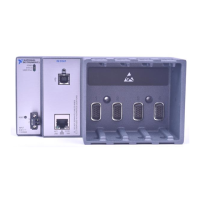© National Instruments | 4-5
cDAQ-9185/9189 User Manual
AO Start Trigger Signal
Use the AO Start Trigger (ao/StartTrigger) signal to initiate a waveform generation. If you do
not use triggers, you can begin a generation with a software command. If you are using an
internal sample clock, you can specify a delay from the start trigger to the first sample. For more
information, refer to the NI-DAQmx Help.
Using a Digital Source
To use AO Start Trigger, specify a source and a rising or falling edge. The source can be one of
the following signals:
• A pulse initiated by host software
• Any PFI terminal
• AI Reference Trigger
• AI Start Trigger
The source also can be one of several internal signals on the cDAQ chassis. Refer to the Device
Routing in MAX topic in the NI-DAQmx Help or the LabVIEW Help for more information.
You also can specify whether the waveform generation begins on the rising edge or falling edge
of AO Start Trigger.
Using an Analog Source
Some C Series modules can generate a trigger based on an analog signal. In NI-DAQmx, this is
called the Analog Comparison Event, depending on the trigger properties.
When you use an analog trigger source, the waveform generation begins on the first rising or
falling edge of the Analog Comparison Event signal, depending on the trigger properties. The
analog trigger circuit must be configured by a simultaneously running analog input task.
Note Depending on the C Series module capabilities, you may need two modules
to utilize analog triggering.
Using a Time Source
To use AO Start Trigger signal with a time source, specify a specific time in NI-DAQmx. Refer
to the Timestamps and Time Triggering topics in the NI-DAQmx Help for more information on
accessing time-based features in the NI-DAQmx API.
Routing AO Start Trigger Signal to an Output Terminal
You can route AO Start Trigger to any output PFI terminal. The output is an active high pulse.
Artisan Technology Group - Quality Instrumentation ... Guaranteed | (888) 88-SOURCE | www.artisantg.com
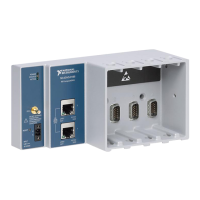
